BAJAJ BROKING
Laxmi Dental IPO is Open!
Open a Free Demat Account
Trade Now, Pay Later with up to 4x
Track Market Movers Instantly
What is an Initial Public Offering (IPO)?
Synopsis:
An initial public offering (IPO) allows a private company to raise capital from the general public for the first time. It also provides shareholders an opportunity to invest in a company, Read more...which may perform well in the future.
That said, investors often have many questions about IPOs. For example, What are the different categories of investors in an IPO? What happens if an IPO is oversubscribed or undersubscribed? What is the difference between the Fixed Price Method and the Book Building Method of an IPO? Or, how is an IPO’s floor price different from its cut-off price? So, if you too are wondering along these lines, read this blog, as it throws light on all important aspects related to IPOs. Read less
When a private company sells its shares to the general public for the first time to raise capital, it is called an initial public offering (IPO).
After a company announces its IPO and people apply for its shares, its shares get listed on a stock exchange. To get listed, a company has to meet a number of compliance-related requirements, which improves the transparency about its owners, its financials, and its future plans.
Hence, an IPO helps improve transparency about a company. Besides, it helps companies in raising much-needed capital and enables people to invest in companies that can grow in the future.
Additional Read: IPO Full Form
What is the Difference Between Book Building Issue and Fixed Price Issue?
To launch an IPO, a company can use either the fixed price method or the book building method or a combination of these two methods.
Suggested H3: Fixed Price Method: In this method, when a company announces its IPO, it informs investors about a fixed price that they will have to pay to apply for its shares. Hence, investors know how much they will have to pay to buy its shares before the company goes public. While submitting the IPO application, investors have to pay the money for shares upfront. In case, a company allots a lesser number of shares than an investor had paid for, it returns the extra funds to him.
Suggested H3: Book Building Method: Under this method, when a company announces its IPO, it provides a price range for its shares to investors, who bid for the shares. In other words, investors inform a company how many shares they want and the price (within the range provided by the company) they are willing to pay. The company builds its book based on the bids it receives. In simple words, it understands the demand for its shares. Then, based on both the demand and supply of shares, the allotment price is determined. Under this method, investors are not aware of the exact price for share allotment while placing their bids.
How Does the Floor Price Differ from the Cut-Off Price in a Book Building Issue?
Let us understand the concepts of “floor price” and “cut-off price” with an example. Suppose a company announces its IPO through the book building route with a price range of ₹ 200 - ₹210. Here, ₹ 200 is the floor price because investors have to place a bid at a minimum price of ₹ 200.
So, investors will start placing their bids at a price between ₹ 200 and ₹ 210 (cap price). Let us say that you placed a bid at ₹ 207. However, the allotment price of shares is determined at ₹ 208. Hence, you will not be allotted any shares because your bid price was less than ₹ 208. So, ₹ 208 is the cut-off price for this IPO.
However, if the allotment price of shares is ₹ 205, you will be allotted shares at ₹ 205 because you had placed your bid at a higher price of ₹ 207. Here, ₹ 205 is the cut-off price.
An IPO’s cut-off price is decided by its lead managers based on the weighted average of all the bids received from investors.
Who are RII, NII, QIB, and Anchor Investors in an IPO?
If you want to apply for an IPO, you need to know the categories under which you can apply because that impacts how many shares you can apply for and whether you can place bids at the cut-off price or not.
RII – Retail Individual Investor (RII): This category of IPO investors includes Retail Individual Investors (RII), Hindu Undivided Families (HUFs), and Non-Resident Indians (NRIs). They can invest at most ₹ 2 lakh in an IPO. Besides, a company has to reserve at least 35% of its IPO for this category. Meanwhile, RII can place their bids for an IPO at its cut-off price.
NII – Non-Institutional Investor: Suppose an investor can place a bid as an RII but he wants to invest more than ₹ 2 lakh, then he can do so under this category called “Non-Institutional Investor (NII).” Under this category, RIIs, HUFs, NRIs, companies, corporate bodies, science institutions, and trusts can place their bids. A company has to reserve a minimum of 15% of its IPO for this category. That said, investors under this category cannot place their bids at the cut-off price.
QIB – Qualified Institutional Bidder: This category includes large investors, such as commercial banks, mutual funds, foreign portfolio investors, public financial institutions, etc. An IPO’s 50% offer size has to be reserved for QIBs. Besides, investors under this category are not allowed to place their bids at an IPO’s cut-off price.
Anchor Investor: An anchor investor is a QIB that applies for at least ₹ 10 crore worth of shares in a book building issue. An anchor investor can be a RII, HUF, NRI, company, corporate body, science institution, society, or trust. Such investors are not allowed to bid at the cut-off price. A company can allot up to 60% of the shares meant to be allotted to the QIB category to anchor investors.
What Does “DP Name” Mean in an IPO Online Application Form?
The term “DP Name” in an IPO application form means the name of a depository participant. We have two depositories in India - Central Depository Services Limited (CDSL) and National Securities Depository Limited (NSDL).
A depository holds an investor’s securities in an electronic form. A DP is an intermediary between depositories and investors. It can be in the form of a bank, a brokerage house, or a financial institution. Under the rules, a DP has to be registered with the Securities and Exchange Board of India (SEBI). As an investor, you have to open an account with a DP and you need to specify his name and ID on an IPO application form.
Is a PAN Number Mandatory for Applying to an IPO?
Investors must mention their PAN Number while applying for an IPO. Moreover, they should cross-check their PAN Number before submitting an application. If they make a mistake while mentioning it, their IPO application can be cancelled.
How Long Does an IPO Stay Open for Public Subscription?
Typically, an IPO stays open for public subscription from 3 to 7 working days. However, in the case of a book-building issue, an IPO can stay open for public subscription by 3 extra working days if the price band is revised.
What is “Market Lot Size” and “Minimum Order Quantity” in an IPO?
“Market lot size” means the number of shares an investor has to purchase in a single order in an IPO. Hence, he can buy shares in the multiples of an IPO’s market lot size. If the market lot size is 50 shares, an investor has to buy 50, 100, 150, 200, and so on shares. He will not be able to buy 75 and 125 shares because they are not a multiple of 50.
“Minimum order quantity” means the lowest number of shares that an investor can apply for in an IPO. In many cases, an IPO’s market lot size and minimum order quantity are the same. However, at times, they can be different. Let us understand it with an example.
Suppose an IPO’s market lot size is 50 but the minimum order quantity is 25. In this case, an investor will have to apply for at least 25 shares. If he wants to apply for more than 25 shares, it needs to be done in multiples of 50.
Can I Submit Multiple IPO Applications Using the Same Name?
No, you cannot apply for an IPO multiple times. This is because you have to provide your Demat account number and PAN number to apply for an IPO. With one Demat account number and one PAN number, you can apply only once. If you still apply multiple times, all your applications that were filed under your name will be rejected.
What is the Basis of Allocation or Basis of Allotment in an IPO?
It is a document that contains information about an IPO’s final price, bidding or demand information, and the ratio in which the shares are allocated. An IPO’s registrar publishes this document.
It is categorised according to the categories of investors who apply to an IPO and the number of shares they apply for. Hence, it can tell an investor about the number of applications for an IPO and also allocation details.
By reading this document, investors can also learn about whether an IPO is oversubscribed and to what extent. Hence, it tells them about the performance of an IPO.
Why is the Maximum Subscription Amount for Retail Investors Capped at ₹ 2 lakh?
Suppose that the maximum subscription amount was not capped at ₹ 2 lakh for retail investors, what would have happened? In that case, some retail investors would have applied for shares worth much more than ₹ 2 lakh.
However, as the number of shares an IPO-issuing company can allocate is limited, the company would not have been able to allocate the shares to a lot of retail investors because some of them have applied for more than ₹ 2 Lakh.
Therefore, to ensure that a wider base of retail investors can apply for an IPO, this limited was capped at ₹ 2 Lakh.
What is the Process to Withdraw an IPO Application?
First, you should go to the website or mobile app that you used to apply for an IPO. Then, you need to go to the IPO section, where you will find the order book. There, you will be able to see the IPO you applied for and its transaction ID. Click on “Withdraw” or “Cancel Bid.” Finally, click on “Submit” to withdraw your IPO application.
How is the Cut-Off Price of an IPO Determined?
The cut-off price of an IPO is determined by its lead managers by considering the weighted average of all the bids received from investors. The weighted average is calculated by considering the price that investors mention while placing their bids and the number of shares they apply for.
How Many IPO Applications Can Be Made from One Bank Account Using ASBA?
According to SEBI guidelines, an investor can make at most five applications from a bank account for one IPO issue using ASBA.
How Many Lots Should I Apply for to Maximize Allocation in the Retail Category?
To answer this question, let us consider two likely scenarios:
a) An IPO is oversubscribed many times in the category of retail investors: If this happens, you will get at most one lot, regardless of the number of lots you have applied for. Besides, you will get that in a lottery system according to the number of times the IPO is subscribed in the retail category. Hence, if a good IPO is expected to be oversubscribed significantly, you must not apply for more than one lot.
b) An IPO may not get fully subscribed in the category of retail investors: It can happen that an IPO is not fully subscribed because it is not very popular or because most retail investors do not have faith in the issuing company’s performance. In this case, you will be allotted the number of shares you have applied (but with a maximum value of ₹ 2 lakh, as retail investors cannot apply for more than this limit). That said, there is a huge risk here. If an IPO is undersubscribed, it shows less demand for its shares. Hence, the price of such an IPO’s shares may fall on their listing day.
When Will the IPO Shares Be Credited to My Demat Account?
This may vary from company to company. However, shares are credited to your demat account typically a day before they get listed on the stock exchange.
Can I Apply for an IPO Using the ASBA Facility Without a Trading Account?
It is not necessary to have a trading account if you are applying for an IPO using the ASBA facility of your bank. Why then is a trading account necessary to buy or sell shares in the secondary market? The fact is that IPOs are launched in the primary market. Hence, you do not need a trading account to apply for them. That said, you still need a demat account to receive the shares allotted in an IPO.
How is a QIB Different from an Anchor Investor?
While anchor investors are a kind of QIB, there are important differences between these two categories of investors:
An anchor investor has to apply for shares worth more than ₹ 10 crore in an IPO.
QIBs can sell a company’s shares any time after it goes public. However, anchor investors cannot sell their shares up to 30 days from the date they are allotted.
Meanwhile, up to 60% of the shares meant for QIB investors can be allotted to anchor investors in an IPO.
The price at which anchor investors place their bids and their bidding window are different from that of QIBs.
Is It Possible to Apply for an IPO Using the BHIM App?
Yes, you can apply for an IPO using the BHIM app because you can use your UPI ID for an IPO application as per the SEBI. And, a UPI ID can be created by using the BHIM app. While filing the application form, you must provide your UPI ID and then submit it. You will get a request from your broker to block the funds on your UPI mobile app.
Then, you must approve the block mandate by logging into the UPI mobile app, which will block the amount you have applied for in your bank account. After the shares are allotted, an amount will be debited from your account based on the number of shares allotted to you and the remaining amount will be unblocked.
Can I Sell IPO Stocks Before They Are Officially Listed?
You cannot sell IPO shares before they are officially listed on the stock exchange.
What Happens if an IPO is Oversubscribed?
An IPO can get oversubscribed if there is a lot of demand for it among investors. Hence, if the demand is more than the supply, it is likely that a retail investor may not get allotted all the shares he had applied for.
Oversubscription also shows that a buzz is possible about a company’s shares around the time it gets listed. Hence, it may witness high trading volumes resulting in an increase in its share price post-listing.
Can I Apply for an IPO Using a Joint Demat Account?
Yes, it is possible to do that. However, the application for an IPO should be in the name of the primary holder of a joint demat account. Besides, you can apply for an IPO only once using a joint demat account.
Do you have a trading account app or demat account app?
You can open an account with Bajaj Broking in minutes.
Download the Bajaj Broking app now from Play Store or App Store.
Disclaimer: Investments in the securities market are subject to market risk, read all related documents carefully before investing.
This content is for educational purposes only. Securities quoted are exemplary and not recommendatory.
For All Disclaimers Click Here: https://bit.ly/3Tcsfuc
Share this article:
- Related Articles
- Top Articles

Gold Rate Today | 15 January 2025 | Gold Price in India
15 Jan, 2025 | 40 Min. read
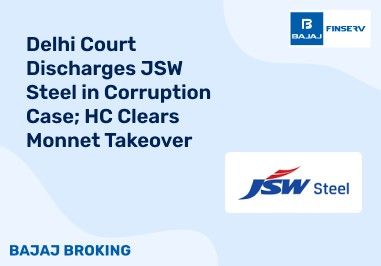
Delhi Court Discharges JSW Steel in Corruption Case; HC Clears Monnet Takeover
15 Jan, 2025 | 2 Min. read
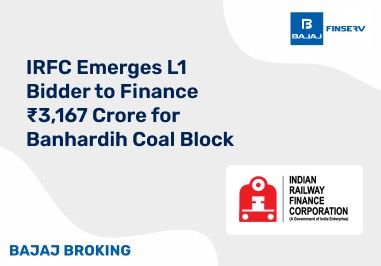
IRFC Emerges L1 Bidder to Finance ₹3,167 Crore for Banhardih Coal Block
15 Jan, 2025 | 2 Min. read
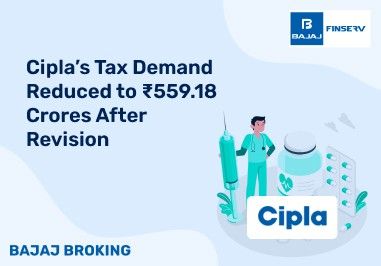
Cipla’s Tax Demand Reduced to ₹559.18 Crores After Revision
15 Jan, 2025 | 2 Min. read

Govt Plans 5-6% Hike in Highway Budget for FY26 After FY25 Slump
15 Jan, 2025 | 2 Min. read

Rikhav Securities IPO- Key Objective & Deep Analysis
15 Jan, 2025 | 5 Min. read

HCL Tech expands partnership with Microsoft to transform contact centres
14 Jan, 2025 | 2 Min. read
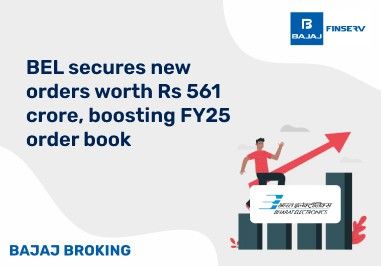
BEL secures new orders worth Rs 561 crore, boosting FY25 order book
14 Jan, 2025 | 2 Min. read
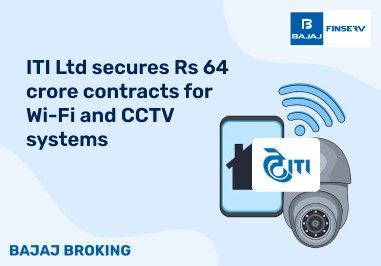
ITI Ltd secures Rs 64 crore contracts for Wi-Fi and CCTV systems
14 Jan, 2025 | 2 Min. read

JSW Energy secures LoI for 3.6 GW KSK Mahanadi power plant
14 Jan, 2025 | 2 Min. read

Biocon Biologics’ Johor Bahru Facility Receives FDA VAI Classification
13 Jan, 2025 | 2 Min. read

Interarch Secures ₹221 Crore Projects in Semiconductors & Energy Storage
13 Jan, 2025 | 2 Min. read
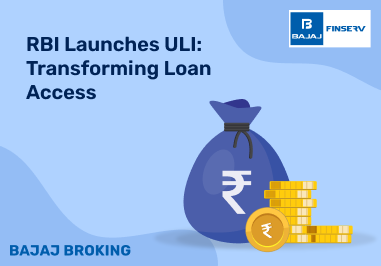
RBI Launches ULI: Transforming Loan Access
August 27, 2024 | 4 Min. read

Textile Sector in India
September 20, 2024 | 5 Min. read
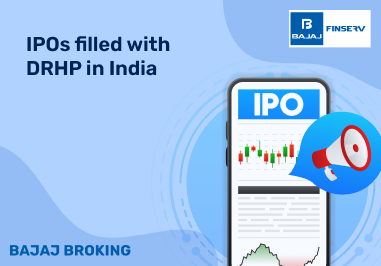
List of IPOs with DRHPs Filed
November 30, 2023 | 3 Min. read

Aditya Birla Group
September 28, 2023 | 10 Min. read

Bajaj Housing Finance Ltd IPO: Things Smart Investors Need to Know
September 05, 2024 | 4 Min. read
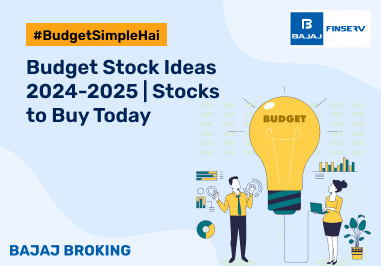
Budget Stock Ideas 2024-2025 | Stocks to Buy Today
July 24, 2024 | 4 Min. read

IPO Eligibility Criteria : Full Details
March 15, 2024 | 6 Min. read
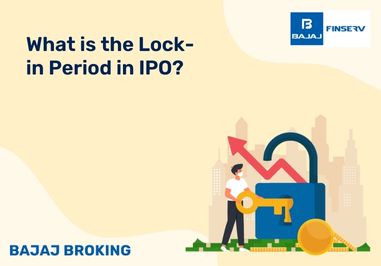
What Is the Lock-In Period in IPOs?
October 18, 2023 | 6 Min. read

Godfrey Phillips Announces 2:1 Bonus Shares
September 16, 2024 | 7 Min. read

Jindal Group- A Comprehensive Analysis
September 27, 2024 | 7 Min. read
Read More Blogs
Our Secure Trading Platforms
Level up your stock market experience: Download the Bajaj Broking App for effortless investing and trading



